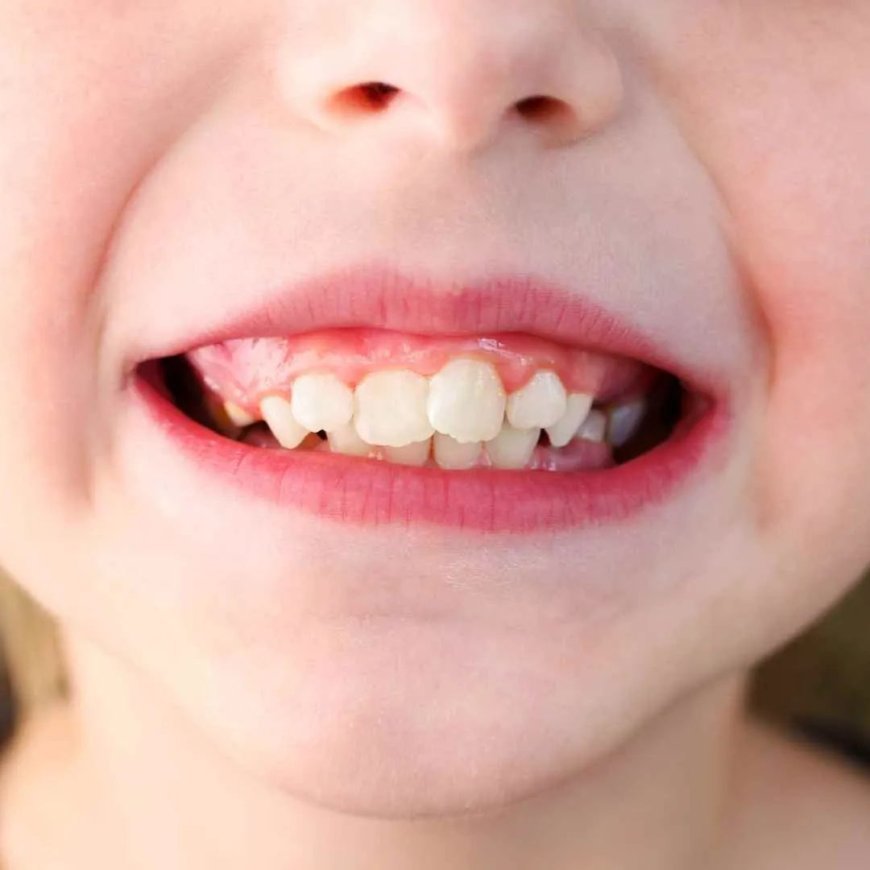Can Buck Teeth Be Corrected Without Braces?

Buck teeth – also known as an overbite or protruding front teeth – are a common dental concern that affect both children and adults. While braces are the most well-known method of correction, many people wonder whether there are alternatives that don’t involve a mouth full of metal. Whether for aesthetic reasons or practicality, the desire to straighten teeth without braces is understandable. In this article, we’ll explore what causes buck teeth, how they can be addressed without traditional braces, and the role of preventive dentistry in avoiding the condition altogether.
What Are Buck Teeth?
Buck teeth refer to a condition where the upper front teeth extend noticeably beyond the lower teeth. This can be a natural part of someone's facial structure, or it can result from habits or dental conditions developed over time. Common causes include:
- Genetics
- Thumb sucking or dummy use in early childhood
- Tongue thrusting
- Jaw misalignment
- Tooth loss or irregular spacing
Though often considered a cosmetic issue, buck teeth can also lead to speech difficulties, chewing problems, jaw pain, and even increased risk of injury to the protruding teeth.
Can Buck Teeth Be Fixed Without Braces?
Yes – in some cases, buck teeth can be corrected without braces. However, the right solution depends on the severity of the condition and the underlying cause. Here are some alternatives:
1. Clear Aligners (Invisalign)
Clear aligners, such as Invisalign, are a popular choice for those wanting a discreet alternative to metal braces. These custom-made, removable trays gradually shift teeth into better alignment. For mild to moderate cases of buck teeth, aligners can be just as effective as traditional braces, without the aesthetic concerns.
It’s worth noting, however, that severe overbites or jaw-related issues may still require more intensive orthodontic intervention.
2. Dental Veneers or Crowns
For adults looking for a cosmetic solution, dental veneers or crowns can sometimes help mask the appearance of buck teeth. Veneers are thin porcelain shells bonded to the front of teeth, giving the illusion of a straighter smile. While this doesn’t correct the underlying alignment, it can be effective for minor cases.
Crowns may also be used when teeth are worn, damaged, or misshapen. Again, while not a functional correction, they can improve appearance significantly.
3. Orthodontic Appliances
In children, certain orthodontic appliances such as headgear or retainers can help guide the growth of the jaw and teeth, potentially avoiding the need for braces later on. These appliances are most effective when used early, during developmental years.
For example, a functional appliance may be used to adjust jaw position, especially if the overbite is due to skeletal discrepancy. These devices are generally worn at night or for part of the day and are most effective when a child is still growing.
4. Behavioural Correction in Childhood
Since habits like thumb sucking or tongue thrusting contribute to buck teeth, early intervention can sometimes eliminate the need for orthodontic treatment altogether. Speech therapy or habit-breaking appliances can help correct tongue positioning or prevent thumb sucking.
Here’s where preventive dentistry plays a crucial role. Regular dental check-ups during childhood can help identify bad habits or early signs of bite problems, allowing for timely intervention.
5. Surgical Correction
In severe cases, particularly those involving jaw misalignment, orthognathic surgery may be considered. This is usually only recommended when other treatments won’t be effective. Surgery can realign the jaw and correct a pronounced overbite, but it is typically reserved for adults after jaw growth is complete.
The Importance of Preventive Dentistry
Preventive dentistry isn't just about cleanings and cavity prevention – it plays a vital role in identifying and addressing developmental issues before they become major problems. For children, early dental assessments allow professionals to monitor jaw development, tooth eruption, and the impact of habits like thumb sucking.
With early guidance, many dental issues – including buck teeth – can be minimised or even prevented. Dentists may recommend spacing appliances, early orthodontic treatment, or refer to a specialist before a full-blown overbite develops.
For adults, preventive dentistry ensures ongoing oral health and allows for early detection of shifting teeth, wear patterns, or bite changes that might exacerbate existing buck teeth. Regular check-ups are key to managing and maintaining improvements, whether made with aligners, veneers, or other treatments.
Summary
While braces are often seen as the default option for correcting buck teeth, they are not the only solution. From clear aligners and dental veneers to surgical options and preventive strategies, there are multiple avenues depending on your age, severity of the issue, and overall dental health. The best approach starts with an accurate diagnosis by a qualified dental professional. Early intervention, particularly in children, can sometimes prevent the need for braces entirely. For adults, cosmetic or functional alternatives can offer significant improvements without the traditional “metal-mouth” appearance. Ultimately, a proactive approach through preventive dentistry can not only reduce the likelihood of developing buck teeth but also ensure that any existing issues are managed effectively and comfortably. If you’re concerned about your bite or appearance, consult with a dentist or orthodontist to explore the most suitable, modern options available – no braces required.
What's Your Reaction?

























































